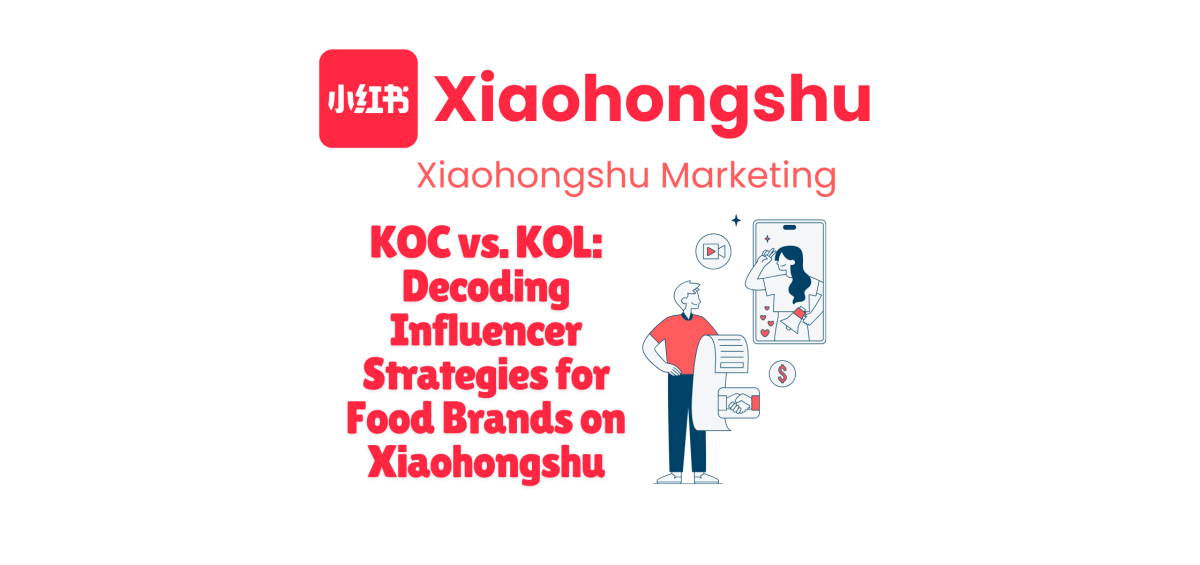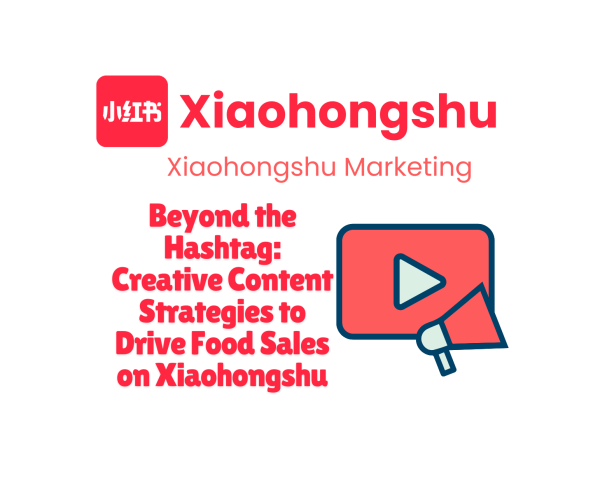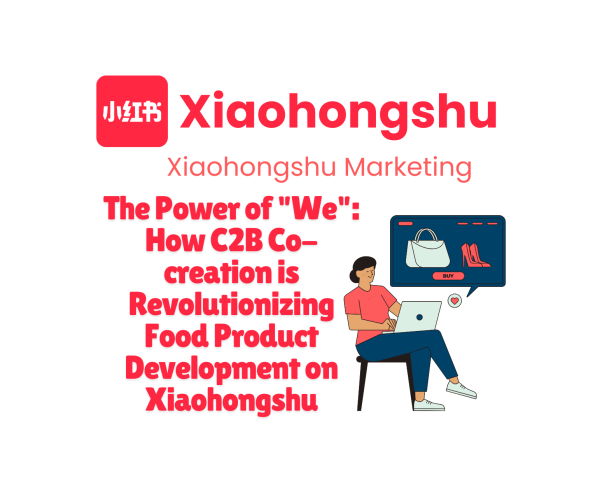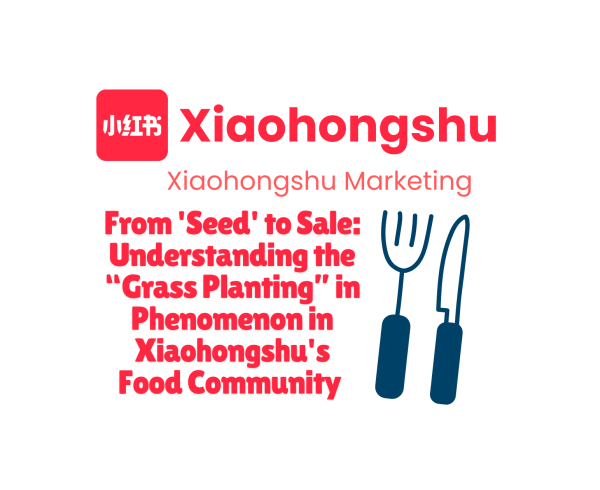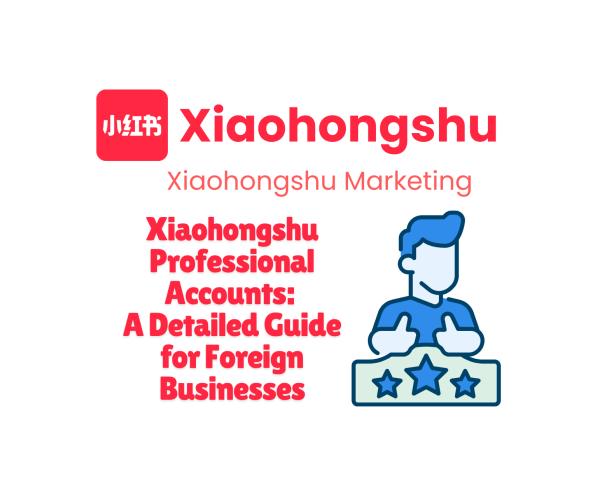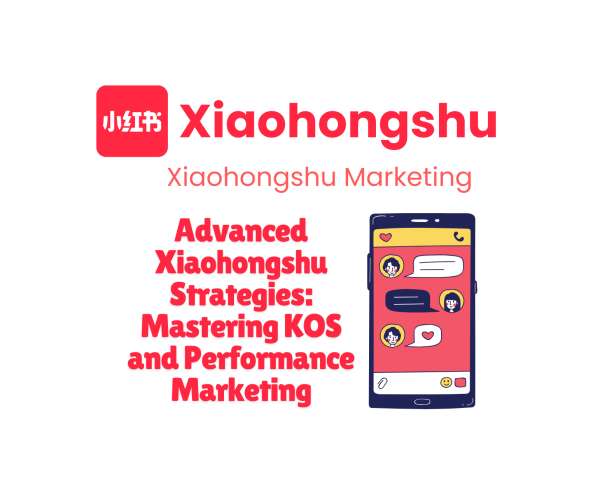KOC vs. KOL: Decoding Influencer Strategies for Food Brands on Xiaohongshu
In the dynamic world of social media marketing, influencer collaborations have become a cornerstone of brand strategy. However, the landscape is constantly evolving, and a nuanced understanding of different influencer types is crucial for success. On Xiaohongshu, the distinction between Key Opinion Leaders (KOLs) and Key Opinion Consumers (KOCs) is particularly important, especially for food brands seeking to connect with consumers and drive sales.
The Rise of Influencer Marketing in China
China’s digital landscape is characterized by its highly engaged and digitally savvy consumer base. Social media platforms wield immense influence over purchase decisions, making influencer marketing an indispensable tool for brands. Influencers, with their ability to shape opinions and drive trends, have become powerful intermediaries between brands and consumers.
KOLs: The Traditional Powerhouses
Key Opinion Leaders (KOLs) are typically celebrities, industry experts, or well-known social media personalities with a large following. They often command significant influence and can generate widespread brand awareness through their endorsements.
- Reach and Visibility: KOLs excel at reaching a broad audience and creating buzz around a brand or product. Their large follower base translates to increased visibility and brand exposure.
- Brand Authority: KOLs are often perceived as experts in their respective fields, lending credibility and authority to the brands they endorse.
- Marketing Campaigns: KOLs are frequently used in large-scale marketing campaigns to launch new products, promote brand events, or drive sales during promotional periods.
KOCs: The Authenticity Advantage
Key Opinion Consumers (KOCs) are everyday consumers who have built a smaller but highly engaged following within a specific niche. They are often seen as more authentic and relatable than KOLs, as they share their genuine experiences and recommendations with their close-knit communities.
- Authenticity and Trust: KOCs are perceived as peers by their followers, fostering a strong sense of trust and authenticity. Their recommendations are often seen as more genuine and less commercially driven than those of KOLs.
- Niche Influence: KOCs wield significant influence within their specific niche, allowing brands to target highly relevant audiences with tailored messages.
- Cost-Effectiveness: Compared to KOLs, KOCs are generally more affordable, making them an attractive option for brands with smaller budgets.
The Power of “探店” (Tàn Diàn): KOCs and Restaurant Reviews
In the food industry, the concept of “探店” (tàn diàn), or “restaurant exploration,” is particularly relevant on Xiaohongshu. KOCs play a crucial role in shaping consumer perceptions of restaurants through their detailed reviews and recommendations.
- Authentic Dining Experiences: KOCs visit restaurants, try different dishes, and share their honest opinions on the food, ambiance, service, and overall dining experience.
- Visual Storytelling: KOCs often create visually appealing content, including photos and videos of the restaurant, its dishes, and the dining environment. This helps to entice potential customers and create a sense of anticipation.
- Community Engagement: KOCs interact with their followers, answering questions, providing recommendations, and fostering discussions about restaurants. This creates a sense of community and trust, making their reviews highly influential.
Leveraging KOCs for Food Brands: The Benefits of KOC 探店招募
For food brands, especially restaurants, KOC 探店招募 (KOC tàn diàn zhāo mù) – KOC restaurant exploration recruitment – offers several compelling benefits:
- Increased Authenticity: By inviting KOCs to experience their restaurants and share their honest opinions, brands can generate authentic content that resonates with potential customers. This is particularly important in the food industry, where consumers value genuine recommendations.
- Targeted Reach: KOCs often have a strong following within a specific geographic area or food niche. By collaborating with relevant KOCs, brands can effectively reach their target audience and drive local traffic.
- Cost-Effectiveness: Compared to large-scale KOL campaigns, KOC 探店招募 is a more cost-effective way to generate buzz and drive sales. Brands can collaborate with multiple KOCs to create a diverse range of content without breaking the bank.
- Long-Term Engagement: Building relationships with KOCs can lead to long-term engagement and ongoing promotion. KOCs can become loyal brand advocates, consistently sharing their positive experiences with their followers.
Strategies for Effective KOC and KOL Collaboration
To maximize the impact of influencer marketing on Xiaohongshu, food brands need to adopt a strategic approach that leverages both KOLs and KOCs effectively:
- Define Your Objectives:
- Brand Awareness: If the goal is to reach a wide audience and generate initial buzz, KOLs can be effective.
- Driving Sales: If the goal is to drive conversions and encourage trial, KOCs can be more influential due to their authenticity and targeted reach.
- Building Trust: KOCs are essential for building trust and credibility, especially for new brands or those seeking to establish a strong reputation.
- Identify the Right Influencers:
- Relevance: Choose influencers whose content aligns with your brand values and target audience.
- Engagement: Look for influencers with high engagement rates (likes, comments, shares) rather than just a large following.
- Authenticity: Prioritize influencers who demonstrate genuine passion and credibility in the food industry.
- Develop Creative Campaigns:
- Authentic Storytelling: Encourage influencers to share their genuine experiences with your brand or restaurant.
- Interactive Content: Create campaigns that encourage user participation, such as contests, giveaways, or Q&A sessions.
- Visual Appeal: Emphasize the importance of high-quality visuals, as food is a highly visual medium.
- Measure and Analyze Results:
- Track key metrics: Monitor reach, engagement, website traffic, and sales generated by influencer campaigns.
- Analyze performance: Identify what types of content and which influencers are most effective in driving results.
- Optimize strategy: Refine your influencer marketing strategy based on data insights and feedback.
Examples of Successful KOC and KOL Campaigns in the Food Industry
- A new restaurant collaborated with several local KOCs to host “探店” events. The KOCs shared their dining experiences on Xiaohongshu, generating positive reviews and attracting a large number of customers within the first few weeks of opening.
- A foreign food brand partnered with a mix of KOLs and KOCs to launch a new product line. KOLs created high-impact content to generate awareness, while KOCs shared authentic recipes and usage tips, driving trial and adoption among their niche communities.
- A food delivery platform leveraged KOCs to promote local restaurants and hidden gems. KOCs created engaging content showcasing their favorite dishes and dining experiences, driving traffic to the platform and supporting local businesses.
The Future of Influencer Marketing in the Food Industry
The role of influencers in the food industry will continue to evolve, with a growing emphasis on authenticity, personalization, and community engagement.
- Micro and Nano-Influencers: The trend is shifting towards micro and nano-influencers, who have smaller but highly engaged followings within specific niches. These influencers are perceived as even more authentic and relatable, making their endorsements highly valuable.
- Live Streaming: Live streaming is becoming increasingly popular on Xiaohongshu, offering food brands the opportunity to engage with consumers in real-time. Influencers can host live cooking demonstrations, restaurant tours, or Q&A sessions, creating a more interactive and immersive experience.
- User-Generated Content (UGC): Brands will increasingly leverage UGC by encouraging consumers to share their own experiences and creations. This can be achieved through contests, challenges, or branded hashtags, creating a sense of community and authenticity.
Conclusion
Xiaohongshu offers a unique platform for food brands to connect with Chinese consumers through influencer marketing. By understanding the distinct roles of KOLs and KOCs, and by implementing strategic and authentic campaigns, brands can effectively build awareness, drive sales, and foster long-term relationships with their target audience. The key is to prioritize authenticity, engage with the community, and leverage the power of user-generated content to create a lasting impact.

